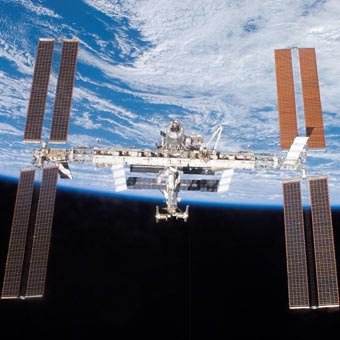
NASA is “poorly positioned” to carry out research on the International Space Station (ISS) due to several years of “dramatically” reduced funding for the agency’s life and physical sciences programme. That’s the view of a report released today by the US National Research Council. Written by an 18-member panel, the report’s authors say that they are “deeply concerned” about the state of NASA’s research programme and call for the agency to now provide a “funding base” for such research.
The report, co-chaired by mechanical engineer Elizabeth Cantwell from the Lawrence Livermore National Laboratory and medical researcher Wendy Kohrt from the University of Colorado, lays out a research agenda for the coming decade. It highlights two broad recommendations for research areas that should be strengthened. These are developing “exploration technologies” and research that takes advantage of the “unique aspects” of the microgravity environment.
Support for NASA’s life and physical sciences programme has fallen steadily over the last decade. In 1996 the agency awarded around $500m for research in advanced life support and advanced space suits to fundamental physics but this fell to around $300m in 2001 and just $150m by 2010. By then the only research that was carried out was in supporting “human exploration and ISS life”. The report says that the programme now has no “institutional home at NASA” and concludes that, as a result, the agency cannot take full advantage of the laboratory environment at the ISS.
Research highlights
The report calls for NASA to “elevate” the life and physical sciences programme to similar levels as in the late 1990s to carry out a much broader diversity of research. It adds that it is “essential” that researchers have a “reasonable level of confidence in research funding” if they are expected to devote time and resources to areas relevant to space exploration.
The report also highlights priorities in different research areas from plant biology to mental health. In the fundamental physics programme these include the study of complex fluids and soft matter in a microgravity environment; precision measurements of the fundamental forces and symmetries; investigating the physics and application of quantum gases; and the behaviour of matter near critical phase transitions.
Some, however, are critical of the science that has been performed by humans in space and at the ISS. “NASA’s science budget is already under severe pressure. In these straightened times the most cost effective way of getting science in space is robotic, not manned missions,” says astrophysicist David Clements from Imperial College London. “While I’m sure this programme will do good work, the scientific return from space for such work is far, far away.”



